Nokia Scalable IP Networks
Last Update 5 days ago
Total Questions : 352
4A0-100 is stable now with all latest exam questions are added 5 days ago. Just download our Full package and start your journey with Nokia Scalable IP Networks certification. All these Nokia 4A0-100 practice exam questions are real and verified by our Experts in the related industry fields.
What happens in a TCP session if a segment is not acknowledged within a certain time period?
Which of the following are considered Virtual Private Networks? Choose all that apply.
The statement below describes which of the following activities?
"A set of tasks that moves a packet from its entry into an IP network to its exit from the IP network."
Host A is transmitting data to host B on a TCP connection. What is the purpose of the ACK sent by host B?
Which of the following statements is FALSE when describing a Virtual Private LAN Service?
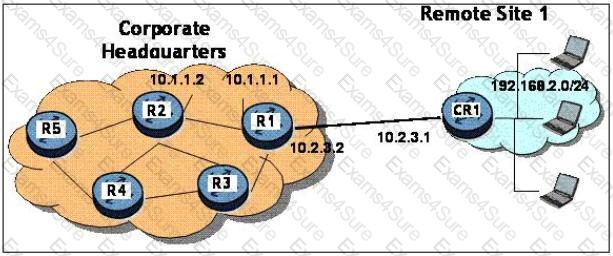
Based on the network diagram (click the Exhibit Button), what are the prefix, mask, and next-hop used on CR1 to setup a default static route to R1?
The 201.148.26.0/24 network is subnetted using a /26 mask. How many subnets and host addresses will be obtained with this mask?
Based on the network diagram (click the Exhibit Button).
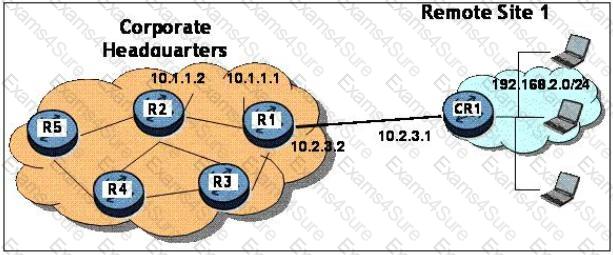
R2 wants to connect a host on 192.168.2.0/24 behind CR1. What is the correct next-hop to use, assuming R1 is configured correctly?
How does a VPRN service avoid the problem of overlapping IP addresses from different customers?
A CE device has a physical connection to which device in the service providers MPLS network?
Multiple SAPs may be defined on the same physical port and may be used for different services.
What happens immediately after an Ethernet switch receives an Ethernet frame?
What is the name for an organization that provides Internet services to its customers?
Click the Exhibit Button below:
An Ethernet Local Area Network (LAN) consists of the components shown in the diagram below:
How many broadcast and collision domains are on this LAN?
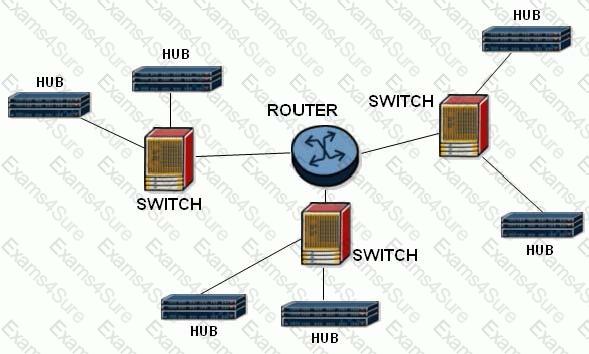
At what stage in the packet forwarding process, is the IP packet header examined?
If a 4-port LAG is configured with the option of 'port-threshold 2' and 'action down' what will happen if the total operational links in the LAG is 2?
The physical networks connecting two PCs to the internet are DSL and PPP respectively. Which layer will enable the two PCs to communicate?
What is the sequence of events for a client to receive an IP address from the server in the DHCP?
What information is used to separate VLANs on a VLAN trunk that connects multiple VLANs?
A set of tasks that move a packet from its entry into an IP network to its exit from the IP network. This describes:
With a subnet mask of 255.255.255.224, which of the IP addresses below are valid host addresses? (Choose all that apply)
A switch with the MAC FDB shown receives an Ethernet frame with source MAC address 00:00:8c:01:00:0a and destination MAC address 00:00:8c:01:00:0c. On which port is the frame forwarded?
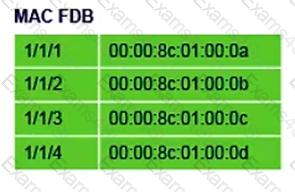
Which of the following statements best describe the purpose of UDP? (Choose two.)
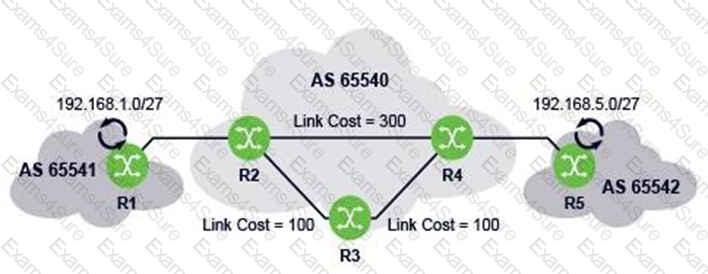
What type of BGP sessions does router R2 need to establish in order to reach networks 192.168.1.0/27 and 192.168.5.0/27?
Which of the following shows a typical data packet flow when ingressing a Nokia 7750 SR?
A given network with address 200.12.30.0 and network mask 255.255.255.0 is divided into 16 equal-sized subnetworks. How many hosts does each subnetwork support?
Based on the network diagram (click the Exhibit Button). Router 1 installs network D in its routing table following a dynamic routing update from Router 2. Which of the following describes the information that will be installed in the routing table?

Which of the MPLS routers is responsible for pushing new labels for LSP A and LSP B?
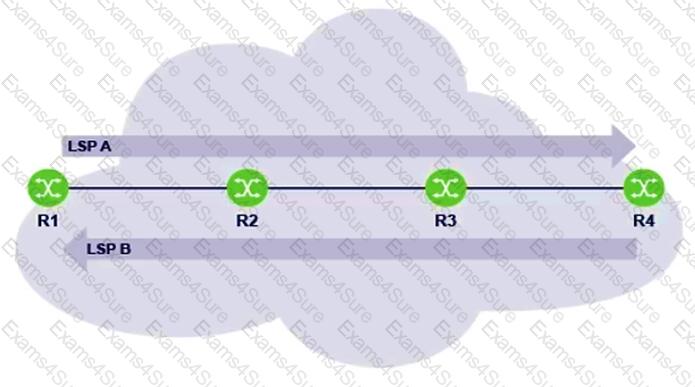
What is the most specific aggregate prefix for the following 4 subnets?
100.1.1.4/30
100.1.1.8/30
100.1.1.12/30
100.1.1.16/30


TESTED 28 Apr 2024
Hi this is Romona Kearns from Holland and I would like to tell you that I passed my exam with the use of exams4sure dumps. I got same questions in my exam that I prepared from your test engine software. I will recommend your site to all my friends for sure.
Our all material is important and it will be handy for you. If you have short time for exam so, we are sure with the use of it you will pass it easily with good marks. If you will not pass so, you could feel free to claim your refund. We will give 100% money back guarantee if our customers will not satisfy with our products.